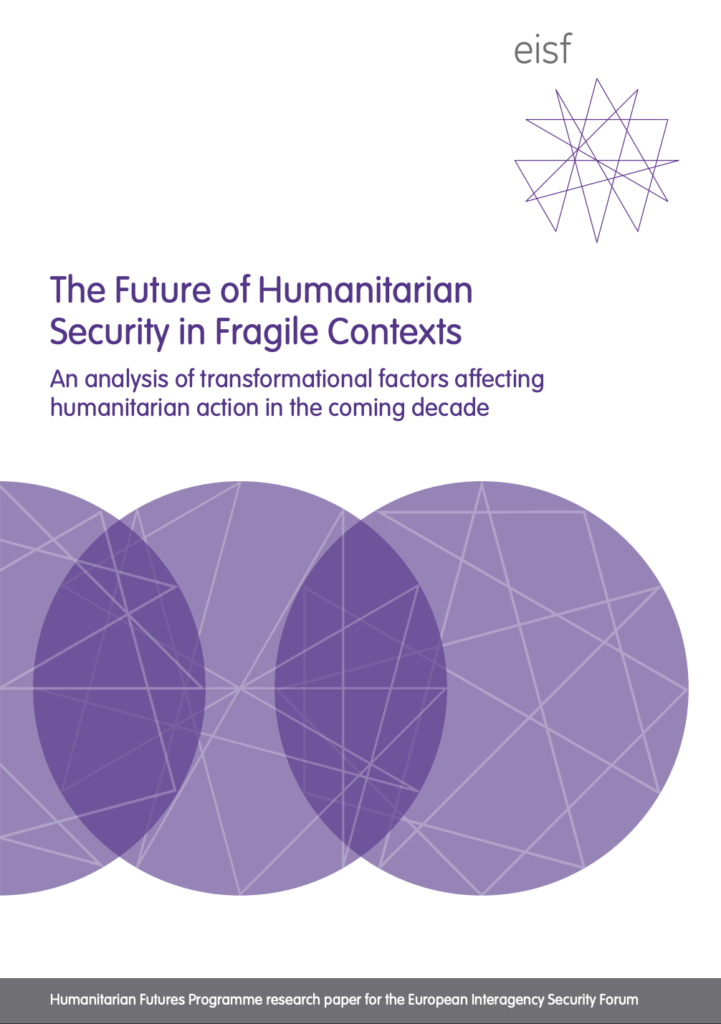The Future of Humanitarian Security in Fragile Contexts: An analysis of transformational factors affecting humanitarian action in the coming decade (2013) stems from a recognition that the humanitarian landscape has changed dramatically in the past decade.
The transformation of the humanitarian landscape has already made a significant impact on the operational security of INGOs and other humanitarian actors. Moreover, as contexts defined as ‘fragile’ increasingly draw the attention of the international community, humanitarian actors will need to give careful consideration to the impact of changes unfolding in fragile contexts.
EISF and the Humanitarian Futures Programme (HFP) have responded to this need with the following exploratory analysis. It is hoped that the study will stimulate further discussion of potential and long-term impact, and thereby help GISF members and others to integrate thinking on these issues into their risk management strategies and operational security plans.
This report serves to inform strategic policy priorities and approaches to security planning and coordination, and addresses three main questions:
• What are the emerging trends, developments and drivers of change that are likely to affect or change security issues and considerations in the humanitarian environment of the future?
• How will the humanitarian sector need to adapt in order to continue to deliver programmes within this changing operational context?
• How prepared are organisations for this future, and what might they need to do differently in order to be prepared?
This paper was written by Justin Armstrong, with the support of Joanne Burke and Simon Bayley of HFP, and the input of Ellie French, Lisa Reilly, and Raquel Vázquez Llorente of the GISF Secretariat.
Suggested citation: Armstrong, J. (2013). The Future of Humanitarian Security in Fragile Contexts. European Interagency Security Forum (EISF).
